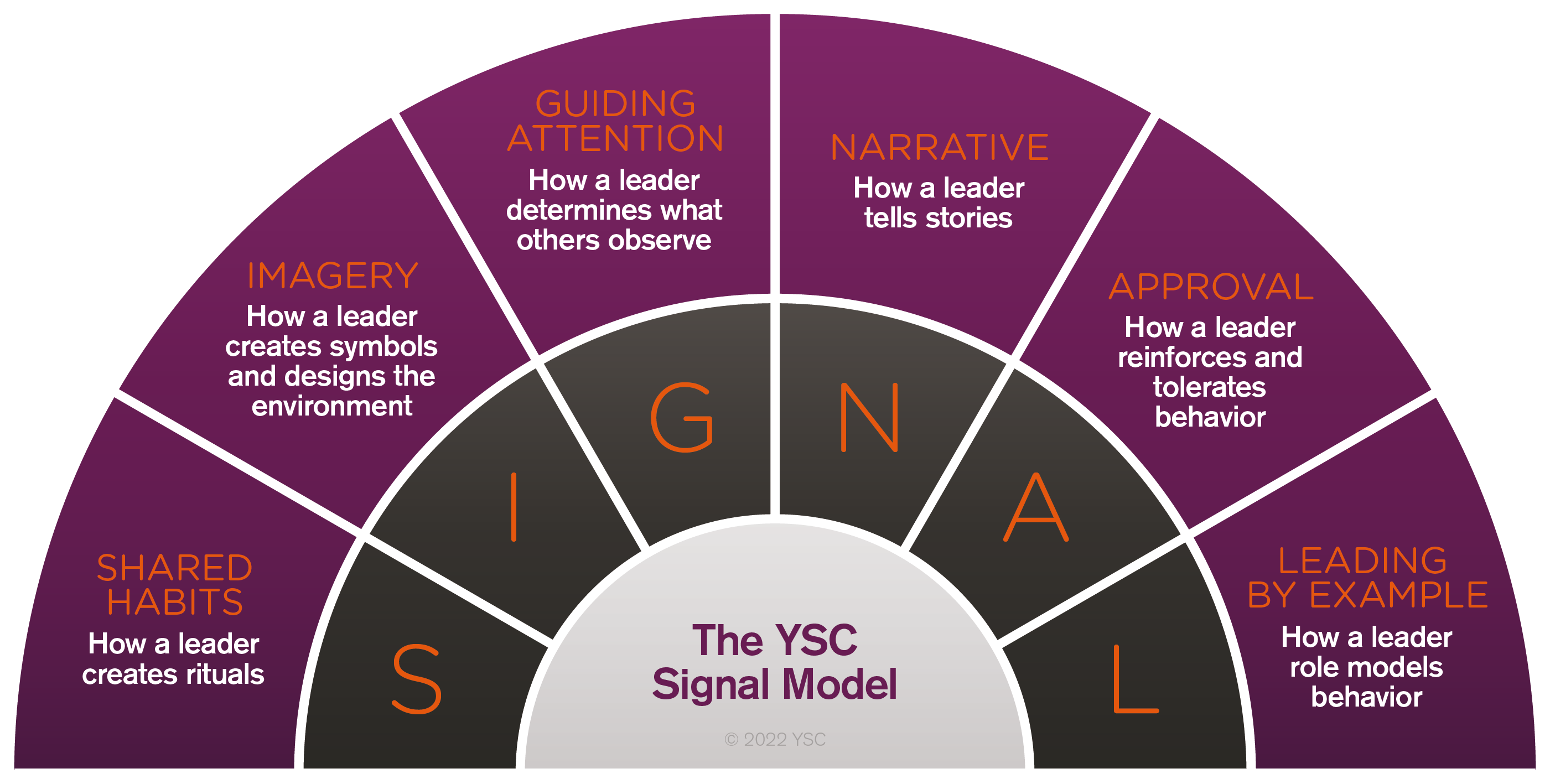More organizational leaders than ever before want to create inclusive cultures. They want to do the right thing for their people, their organization, their stakeholders, and their legacy. Yet despite these good intentions, the reality is most organizational cultures are just not that inclusive.
This surge of positive intent is not translating into better work environments. Perhaps more surprisingly, this can be true even when all the right processes, practices and policies are in place. Even when leaders have seemingly set up the perfect conditions for inclusion.
The issue is that policies, practices and processes are only part of what creates a culture. Culture is ‘the way we do things around here’ – an inherently tacit thing. People pay attention to the informal, social actions of those above them. Amid all the noise, it is these SIGNALs that demonstrate what the leader truly values, what will actually be rewarded, and therefore how things ‘should’ be done here.
As a leader, you are always signaling something. To ensure that your impact matches your intent when it comes to shaping an inclusive culture, here are some do’s and don’t for each SIGNAL.

Shared habits
Inclusive leadership involves shaping culture by creating shared habits and rituals, such as team meetings, celebrations or ways of working that bring different people together. These shared habits create social consensus and offer a way of bridging differences and creating a sense of belonging.
Do
- Insist on diverse representation as the standard expectation (e.g. a diverse set of candidates while hiring, a diverse panel of speakers at events).
- When someone is praised or recognized, ask them to thank someone who has been overlooked but was critical to the outcome.
Don’t
- Expect a woman or someone from a marginalized group to do the ‘office housework’ i.e taking notes, organizing birthdays, making coffee.
Imagery
These are the visual, verbal and other symbols or associations that leaders use to design the environment which in turn shape the culture.
Do
- Add pronouns to your email signature, business cards, bios and company website to show you’re creating a space for others to share their identities.
- Visibly and vocally support marginalized or minoritized groups (e.g. displaying symbols like the Pride flag) to create a sense of safety and respect.
Don’t
- Default to images or examples of the dominant demographic in communications or marketing materials which might imply that these are the groups that belong here.
Guiding attention
In any organization, there is a lot to pay attention to. All leaders direct attention to what really matters for them. What and who you spotlight, be it DEI initiatives or specific people, has a big impact on what people take seriously.
Do
- Nudge others to recognize the unique needs, concerns or requests of marginalized or minoritized team members, to ensure other team members also pay attention to DEI.
- Advocate for someone from a marginalized group to represent your team or organization on a prominent platform such as a speaking engagement or investor conference.
Don’t
- Change the subject when someone from a marginalized group raises a DEI issue, since this might shut down any further attempts to bring up important issues.
Narrative
Leaders need to engage, inspire and motivate their people. This is especially important for nuanced topics like DEI. A clear, memorable, and compelling narrative allows you to align your people around a shared understanding of the DEI vision in your organization.
Do
- Share personal stories to show how you are continuously learning about DEI, giving examples of past assumptions you let go of or how you’ve adapted as a result of having been challenged.
- Use your platform to challenge the status quo where it is perpetuating inequities or inadvertently causing harm to minoritized groups.
Don’t
- Use metaphors, idioms or references without being sure that they don’t have any racist, imperialist, sexist or otherwise problematic origins.
Approval
What leaders approve of, in small, everyday ways, has a huge influence on how successful they will be at creating an inclusive culture. What you approve of signals to others what you value – and therefore, what they should value. What you are seen to tolerate or let go of is every bit as telling as what you actively approve of.
Do
- Invest budget and resources into DEI goals to literally put your money where your mouth is.
- Publicly celebrate those who take actions to enhance DEI efforts to show that this is encouraged and indeed expected of all employees.
Don’t
- Tolerate ‘jokes’ or ‘banter’ that undermine team members from minoritized groups – these forms of microaggressions create a culture of exclusion, if not discrimination.
Leading by example
Whether leaders intend it or not, the way you act provides a template for others’ behaviour. From daily interactions to how you react in challenging times, it gives insight as to what is – and is not – tolerated or celebrated in the organization.
Do
- Challenge discrimination when you see it, whether through adapting policies and practices or calling in others to create more equitable systems.
- Broaden your own networks and encourage followers to do the same.
Don’t
- Openly only favor people like you.
In a nutshell
Many leaders are surprised to learn that they are unintentionally sending out the wrong signals. This results in their genuine desire to be inclusive not translating into actual experienced inclusion. The missing link is to become aware of your informal social impact, not just formal workplace factors.
Inclusive leaders are those who signal curiosity, courage and connection in their daily actions. To ensure your intention and impact are aligned, be aware of the SIGNALs you send to others about your approach and commitment to DEI.